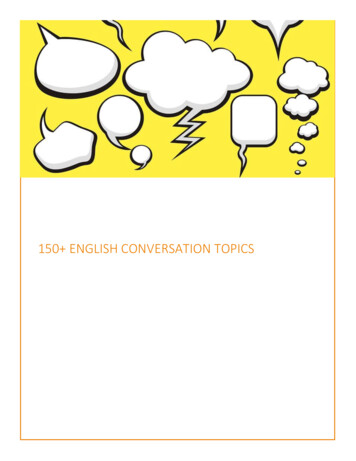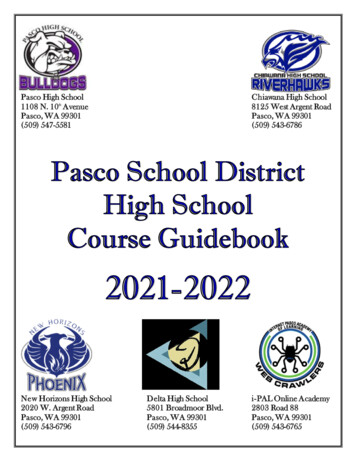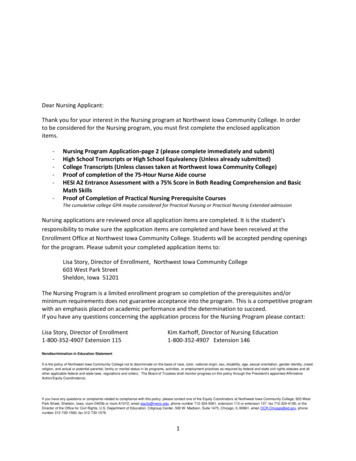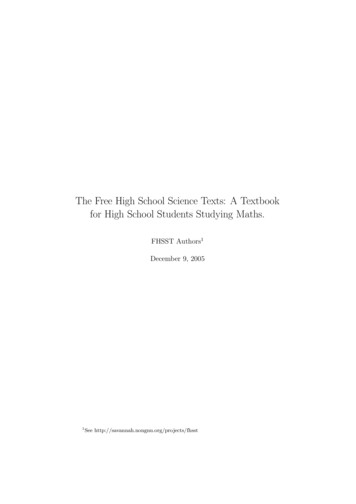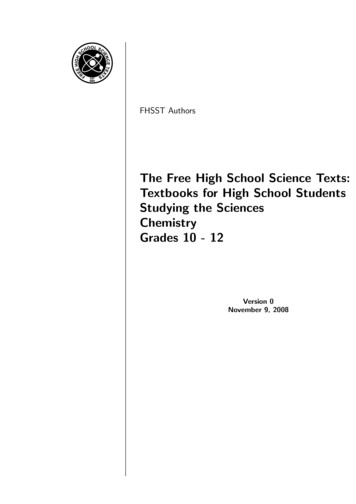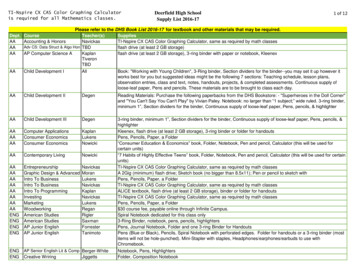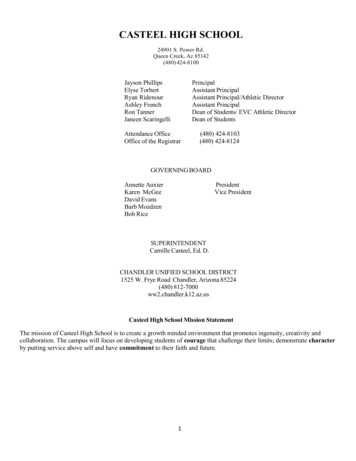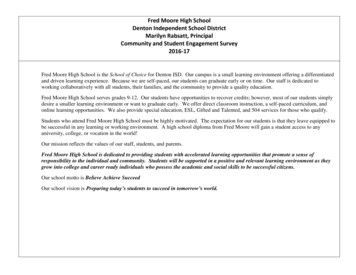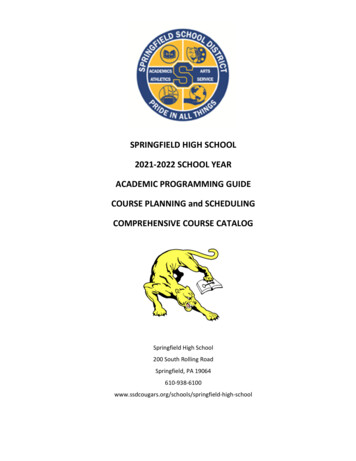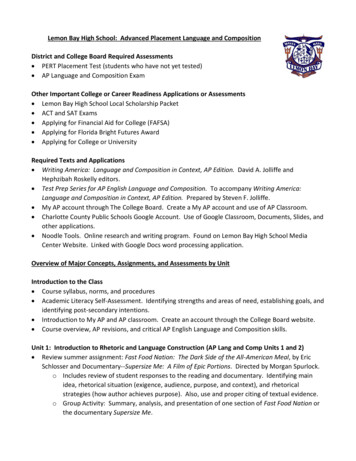
Transcription
Lemon Bay High School: Advanced Placement Language and CompositionDistrict and College Board Required Assessments PERT Placement Test (students who have not yet tested) AP Language and Composition ExamOther Important College or Career Readiness Applications or Assessments Lemon Bay High School Local Scholarship Packet ACT and SAT Exams Applying for Financial Aid for College (FAFSA) Applying for Florida Bright Futures Award Applying for College or UniversityRequired Texts and Applications Writing America: Language and Composition in Context, AP Edition. David A. Jolliffe andHephzibah Roskelly editors. Test Prep Series for AP English Language and Composition. To accompany Writing America:Language and Composition in Context, AP Edition. Prepared by Steven F. Jolliffe. My AP account through The College Board. Create a My AP account and use of AP Classroom. Charlotte County Public Schools Google Account. Use of Google Classroom, Documents, Slides, andother applications. Noodle Tools. Online research and writing program. Found on Lemon Bay High School MediaCenter Website. Linked with Google Docs word processing application.Overview of Major Concepts, Assignments, and Assessments by UnitIntroduction to the Class Course syllabus, norms, and procedures Academic Literacy Self-Assessment. Identifying strengths and areas of need, establishing goals, andidentifying post-secondary intentions. Introduction to My AP and AP classroom. Create an account through the College Board website. Course overview, AP revisions, and critical AP English Language and Composition skills.Unit 1: Introduction to Rhetoric and Language Construction (AP Lang and Comp Units 1 and 2) Review summer assignment: Fast Food Nation: The Dark Side of the All-American Meal, by EricSchlosser and Documentary--Supersize Me: A Film of Epic Portions. Directed by Morgan Spurlock.o Includes review of student responses to the reading and documentary. Identifying mainidea, rhetorical situation (exigence, audience, purpose, and context), and rhetoricalstrategies (how author achieves purpose). Also, use and proper citing of textual evidence.o Group Activity: Summary, analysis, and presentation of one section of Fast Food Nation orthe documentary Supersize Me.
Lecture: Reading Critically and Rhetorical Analysis—Introduction to Rhetoric, The RhetoricalSituation, and approaches to reading critically.Reading: Chapter 1 (p. 3-27) from Writing America. Reading as Inventing.Reading: Chapter 4 (p. 71-106) from Writing America. Rhetoric and Analysis.Close Reading Activity: “If You Pitch It, They Will Eat” by David Barboza. Includes pre-reading andreading strategies, citing evidence from text, vocabulary, and identifying components of therhetorical situation.On AP Classroom: Personal Progress Check 1—Multiple-Choice Assessment.Lecture: Structure of an Academic Essay (Argument). Includes rubrics provided by the CollegeBoard and AP Central. Critical focus—Argument EssayAssessment: In-Class Essay #1 (Argument)—Should advertisements that target children andpromote unhealthy eating be banned? Includes peer and instructor review, and final essay selfassessment.Assignment: Key Terminology Poster Project. Includes presentation and quiz on information.On AP Classroom: Personal Progress Check 2—Multiple-Choice Assessment.Unit 2: The Universe of Discourse and Rhetorical Analysis of Core Historical Texts (AP Units 3 and 4) Lecture/Activity: James Moffett’s The Universe of Discourse (reporting, recording, generalizing,and theorizing) and Writing Theory. Reading: Hiroshima, by John Hersey (originally published in The New Yorker, August 31, 1946) Activity/Simulation: Common Japanese words and phrases, geography of the Pacific Rim, andwriting exercise. Critical Analysis of Texts: “Statement by the President of the United States” by Harry Truman andartistic interpretation of a historical event “Electric Funeral” by Black Sabbath. Activity and Critical Analysis: The controversy of using nuclear weapons. “Letter from Mayor ofHiroshima”, by Tadatoshi Akiba. Activity and Comparison of Texts (from Writing America): Bush (p. 928), Jackson (p. 370), Lincoln (p.589), R. Kennedy (p. 825). Reading: “Dillon S. Myer and the WRA’s History of “Relocation, Reintegration, and Rehabilitation”from Historical Memories of Japanese American Internment and the Struggle for Redress, by AliceYang Murray. Researched Synthesis Essay—Historical Investigation. Generate a thesis topic using Moffett’sUniverse of Discourse.o Learning and using Noodle Tools, Google Docs, and accessing One Drive Accounto Using MLA format, in-text citations, and creating a works cited pageo Essay drafted in stages based on the process approach to writing (prewriting, drafting,revising, editing, and publishing). Includes peer review and instructor feedback.Unit 3: “Language Construction, Rhetoric, and Argument” (AP Lang and Comp Units 5 and 6) Reading: Chapter 7 (p. 149-162) from Writing America. Sentences. Reading: Chapter 4 (p. 71-106) from Writing America. Rhetoric and Analysis (focus on syntax). Assignment: Grammar, Sentence Structure, and Syntax Poster Project.
Reading: Chapter 3 (p. 49-70) from Writing America. Composing Rhetorically.Lecture/Activity: Classical Rhetoric and Modes of Persuasion.Activity: In Depth Analysis—Dr. Martin Luther King Jr. Examples of ethos, pathos, and logosFormative Assessment: Print Advertisement AnalysisLecture: Foundations of Logic and Fallacies of Logical ReasoningQuiz: Fallacies of Logical ReasoningReading: Chapter 5 (p. 107-126) from Writing America. Argument.Argument for Analysis: “Grades: A Gun to Your Head”, by Charles EisensteinReading: Section II of Test Prep Series Study Guide. The Composition Free Response Section. (p.53- 58; 91-99; 113-114; 120-121).Assessment: In-Class Essay #2 (Analysis): Rhetorical analysis of Cesar Chavez’s articlecommemorating the 10th anniversary of Dr. Martin Luther King Jr.’s assassination. Includes peerand instructor review, and final essay self-assessment.Assessment—Group Activity: Power Debates. Selection of local, regional, national, or globaltopics. Involves research and composing of: introduction, presentation of research, crossexamination questions, and conclusion. Use of databases, webmixes, and other researchapplications from LBHS Media Center Website.Semester One Final Exam Part I: Multiple-choice. Released AP Language and Composition Exam. Part II: Matching. Modes of Persuasion, identifying logical fallacies, key terminology, grammar,syntax, and sentence structure.Unit 4: The Personal Journey: Finding Our Place in Society (AP Lang and Comp Unit 7) Reading: Into the Wild, by John Krakauer. (originally published in January 1993 issue of Outsidemagazine under the title “Death of an Innocent”). Reading and Critical Analysis: Identifying main idea, author’s purpose, and how author achievestheir purpose. Also, use and proper citing of textual evidence.o “The Banking Concept of Education” by Paulo Freire.o from The Narrative of the Life of Fredrick Douglass, An American Slave. Chapters 1, 6, and 7. Group Activity: Summary, analysis, and presentation of a text or section of text—Krakauer, Freire,or Douglass. Lesson/Activity: Looking at the Free Response—The Synthesis Essay. Includes understanding andanalysis of visual arguments, looking at stakeholders, and breaking down and preparing for thesynthesis essay. Assessment: In-Class Essay #3 (Synthesis): Based on the College Board AP Language andComposition Exam. Includes peer and instructor review, and final essay self-assessment.Mock AP Language and Composition Exam Includes full multiple-choice exam and one free response essay. Includes identification of errors,analysis, and correction of multiple-choice responses. Includes peer and instructor review, andfinal free response self-assessment.
Unit 5: Perception, Knowledge, Philosophy, and The Matrix (Revisit Concepts from AP Units 1-7) Activity: Determine an individual’s Locus of Control—lecture, self-assessment, and writing activitybased on theory developed by psychologist Julian Rotter. Anchor Text (Film): The Matrix, by the Wachowski brothers (1999). Includes focused note taking(Cornell Style), daily writing prompts, and class discussion. Reading “Fate, Freedom, and Omniscience” by Theodore Schick. From, The Matrix and Philosophy:Welcome to the Desert of the Real. Includes lecture notes and discussion. Rhetorical and Philosophical Analysis: “Freewill” by Rush and “Freedom of Choice” by Devo.Includes individual and group work and whole class discussion. Survey of Theories on Knowledge and Development (Development of Thought and Knowledge):Includes excerpts from “Lecture on Modern European Intellectual History”, Piaget’s stages ofcognitive development, and Locke’s theory of the tabula rasa. Reading: Book VII of The Republic—The Allegory of the Cave, by Plato. Includes discussion andanalysis of the stages of the “slave”. Project: Creative Interpretation of The Allegory of the Cave, by Plato. Small group analyticalresearch project to further investigate Plato’s allegory. Reading: “Happiness and Cypher’s Choice: Is Ignorance Bliss?” by Charles L. Griswold Jr. From, TheMatrix and Philosophy: Welcome to the Desert of the Real. Includes lecture notes and discussion. Socratic Seminar: Discussion of truth, knowledge, happiness, and ignorance. Focused classdiscussion on above topics. Includes posing a topic, responding, and note taking. Final Unit Essay: In-depth research essay based on concept of choice from unit on “Perception,Knowledge, Philosophy and The Matrix” (Follows MLA Format for research papers).o Use of Noodle Tools, Google Docs, and CCPS One Drive Accounto Using MLA format, in-text citations, and creating a works cited pageo Essay drafted in stages based on the process approach to writing (prewriting, drafting,revising, editing, and publishing). Includes peer review and instructor feedback.Unit 6: Introduction to Literary Criticism and Analysis (AP Lang and Comp Units 8 and 9) Activity: Introduction to literary criticism. Prior knowledge writing prompt and class discussion. Reading: Slaughterhouse V, or The Children’s Crusade: A Duty-Dance with Death, by Kurt Vonnegut(1969). Lecture and Discussion: The Modern and the Postmodern. Assignment(s): Literature Responses. Students will complete three literature responses over thecourse of the novel. Includes summary of the text, identification of rhetorical strategies,identification of themes or symbols, and citing evidence from the novel. Lecture and Discussion: Literary Criticism. Includes discussion of the duty of the literary critic andintroduction to Reader Response Criticism. Lecture and Discussion: Psychoanalytic Criticism. Introduction to Freud’s concept ofpsychoanalysis. Group Research Project: Create a creative, informational presentation on selected topics andthemes from the unit. Possible topics are literary criticism to major themes from the novel.Includes class presentation.
Semester Two Final Exam Part I: Multiple-choice. Released AP Language and Composition Exam. Part II: Matching. Modes of Persuasion, the Rhetorical Situation, grammar, syntax, and style.
Unit 3: “Language Construction, Rhetoric, and Argument” (AP Lang and Comp Units 5 and 6) Reading: Chapter 7 (p. 149-162) from Writing America. Sentences. Reading: Chapter 4 (p. 71-106) from Writing America. Rhetoric and Analysis (focus on syntax). Assignment
